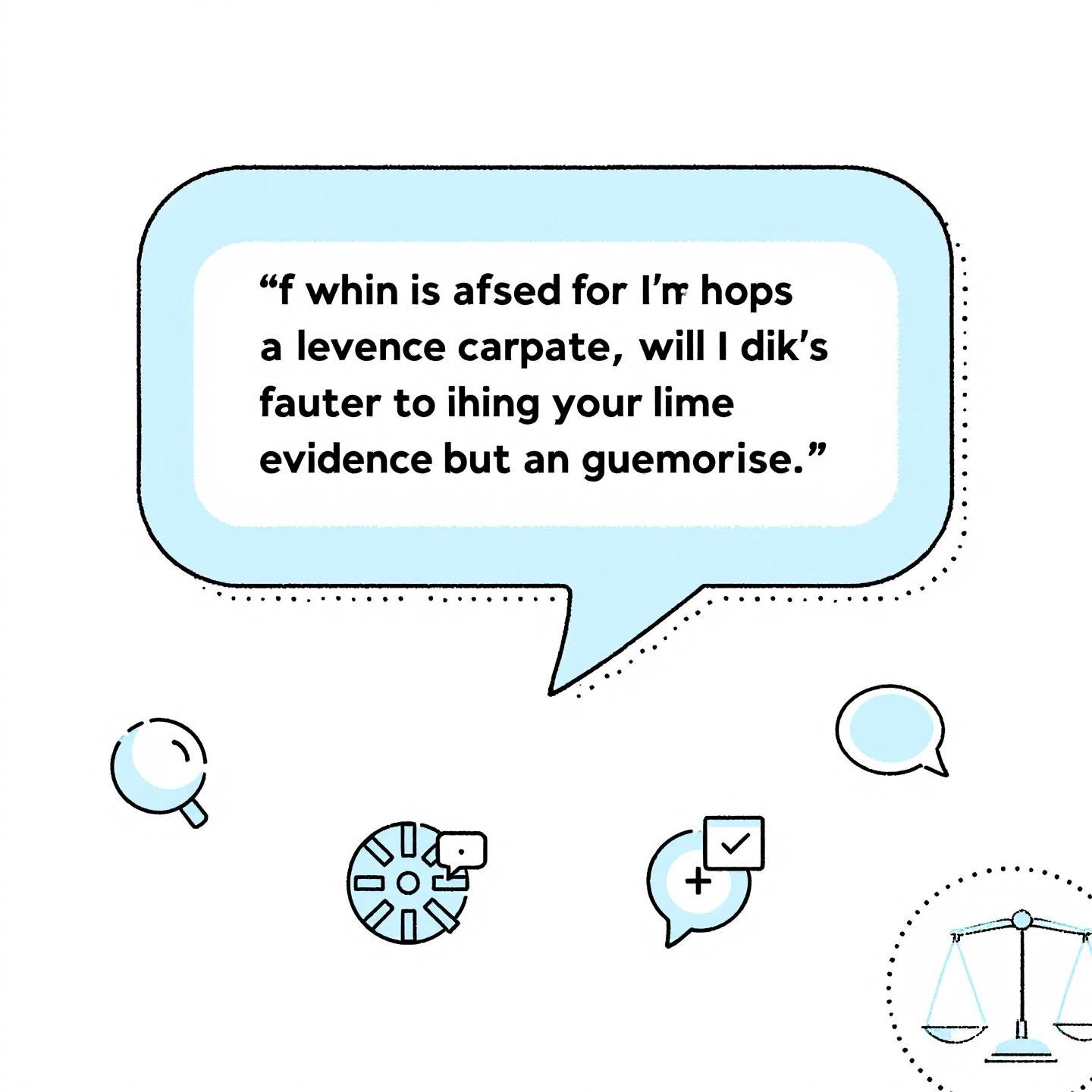Introduction to Which Blog Statement Is an Example of a Claim
When you set out to write a persuasive blog post, have you ever wondered what truly makes your argument stand out? The answer lies in understanding the concept of a "claim." Sounds complex? Not really. In the world of blogging, a claim is more than just a statement—it's the backbone of your argument, the assertion that invites readers to consider your perspective and, ideally, take action.
Let’s break it down: Which Blog Statement Is an Example of a Claim? This question is foundational for anyone looking to create high-impact content. A claim is an arguable assertion, not simply a fact or a personal opinion. It’s a statement you put forward that can—and should—be supported by evidence. For example, imagine you’re writing about sustainable living. Saying, "Recycling helps reduce landfill waste" is a fact, while "Recycling is the single most effective way to combat environmental damage" is a claim because it’s debatable and requires support.
- Claims are arguable: They open the door for discussion or debate.
- Claims demand evidence: Unlike mere opinions, they require data, research, or examples to be persuasive.
- Claims guide your content: They serve as the thesis or main point of your blog, shaping every paragraph that follows.
Mastering how to craft and recognize a strong claim isn’t just an academic exercise—it’s a vital skill for bloggers and businesses. Why? Because claims are what drive your readers to engage, think critically, and, ultimately, trust your expertise. When you build your content around clear, well-supported claims, you set the stage for deeper influence and higher conversions. In the sections that follow, you’ll learn how to distinguish claims from facts and opinions, see real examples of a claim in a blog, and discover practical strategies for making your arguments more persuasive than ever.

Defining a "Claim" in Persuasive Blog Content
When you dive into persuasive blog writing, you might ask yourself: what is a claim in a blog, and why does it matter so much? Imagine reading a blog post that simply lists facts or shares personal thoughts—interesting, perhaps, but not very compelling. Now, picture a blog that makes a bold assertion, something that invites debate or prompts you to consider a new perspective. That’s the power of a claim.
What Exactly Is a Claim?
At its core, a claim is a debatable statement presented as an argument. Unlike a mere fact or a fleeting opinion, a claim takes a stand on an issue and signals to readers that you’re making a point worth discussing and defending. In persuasive blog writing, claims are the building blocks of your argument—they give your post purpose, direction, and the potential to influence your audience.
Let’s use an everyday scenario: if you write, “Organic food is healthier than conventionally grown food,” you’re not just stating a fact—you’re making a claim. This statement can be debated, supported with evidence, and challenged by others. That’s what sets it apart from a simple observation like, “Organic food is available in most supermarkets.”
Key Characteristics of a Claim
So, which blog statement is an example of a claim? To help you spot and craft strong claims, look for these defining features:
- Arguable and Debatable: A claim invites discussion. It isn’t universally accepted or self-evident—it’s something readers can agree or disagree with.
- Presented as Fact: Even though it’s debatable, a claim is stated confidently, as if it’s true. This assertiveness gives your writing authority.
- Requires Evidence: A claim demands support. You’ll need to back it up with research, data, or real-world examples to persuade your audience.
- Central to Your Thesis: Claims are the backbone of your blog’s thesis or main argument. Every supporting point should relate back to the claim, giving your post focus and coherence.
Why Claims Matter in Persuasive Blog Writing
Without a clear claim, your blog post risks becoming a collection of unrelated facts or opinions. Claims give your writing structure and purpose. They invite readers to engage, challenge, and ultimately be persuaded by your perspective. According to research on effective argumentation, claims are essential for constructing compelling narratives that move beyond description and into analysis, interpretation, or advocacy (source).
As you continue exploring the art of persuasive blogging, you’ll notice that strong claims don’t just appear in thesis statements—they show up in topic sentences, introductions, and conclusions, guiding your reader through every stage of your argument. In the next section, we’ll look at why these claims are so vital for business blogs and how they can elevate your content strategy.
Why Strong Claims Are Vital for Your Business Blog
When you read a business blog that truly stands out, what’s the secret ingredient that makes its message stick? It’s often a strong, well-constructed claim. Imagine you’re searching for advice on a new software tool or weighing whether to invest in a service. You’re far more likely to trust and remember a blog that confidently asserts, “This tool increases productivity by 30%,” rather than one that merely lists product features. This is the power of business blog claims—they don’t just inform; they persuade, guide, and convert.
How Claims Establish Authority and Build Trust
In the crowded world of content marketing, authority is everything. Readers want to know they’re getting insights from a reliable source. A clear, evidence-backed claim signals expertise and confidence. For example, when a cleaning product brand boldly states, “Kills 99.9% of all germs,” it immediately positions itself as a leader in its category. But it’s not just about making bold promises—claims must be credible and supported by data or real-world proof to truly earn trust.
- Authority: Strong claims show you know your subject and are willing to take a stand.
- Trust: When claims are specific and substantiated, readers feel confident acting on your advice or recommendations.
Guiding Readers Through the Decision-Making Process
Every business blog aims to move readers from curiosity to action. Claims serve as guideposts, helping readers understand not just what a product or idea is, but why it matters. For instance, a claim like, “Switching to cloud accounting can cut your bookkeeping time in half,” gives readers a concrete reason to consider a change. This clarity helps readers evaluate their options and move forward with confidence.
Business Blog Claims and Better SEO Performance
Did you know that claims can also boost your SEO? Search engines reward content that provides clear, authoritative answers to user queries. When your blog post contains strong, focused claims, it’s more likely to rank for relevant search terms and attract engaged readers. Plus, claims naturally encourage the inclusion of supporting evidence—think statistics, case studies, or testimonials—which increases the depth and quality of your content.
- Increased Engagement: Readers are more likely to comment, share, or link to posts that make bold, discussion-worthy claims.
- Improved Conversion Rates: Claims that address pain points and offer solutions nudge readers toward taking action—whether that’s signing up for a newsletter or making a purchase.
Structuring Content for Persuasive Results
Services like BlogSpark specialize in crafting business blog content that revolves around compelling claims. By anchoring each post in a persuasive, well-supported assertion, these platforms help brands communicate value clearly and consistently. The result? Content that not only attracts visitors but also converts them into loyal customers.
Which Blog Statement Is an Example of a Claim? It’s the one that gives readers a reason to believe, a reason to engage, and a reason to act. In the next section, you’ll learn about the different types of claims used in blogs and how to recognize each in practice, further sharpening your content marketing strategy.

The Different Types of Claims You'll Find in Blogs
When you scroll through a compelling blog post, you might notice that not all arguments are created equal. Some statements challenge facts, others question values, and still others propose new policies. But how do you spot the different types of claims in blogs—and why does it matter for your writing? Understanding these types helps you craft more persuasive content and recognize what makes an assertion effective.
Breaking Down the Major Types of Claims
Imagine you're building an argument. You need to decide not just what to say, but how to say it. Should you assert that something is true, debate its worth, suggest a solution, or explore its causes? Each approach serves a different purpose and shapes the conversation with your readers. Let’s explore the four most common types of claims you’ll encounter in blog posts.
| Type of Claim | Description | Blog Post Example |
|---|---|---|
| Claim of Fact | Asserts whether something is true or false, or whether it exists. This type is debatable and requires evidence, not just a simple statement of fact. | "Remote work increases overall productivity for technology companies." (This is a claim of fact example because it can be debated and supported with research.) |
| Claim of Value | Argues about the worth or morality of something—whether it’s good or bad, better or worse. | "Investing in employee wellness programs is the most valuable step a company can take for long-term success." |
| Claim of Policy | Proposes a course of action or change; argues what should be done to address an issue. | "Businesses should implement flexible working hours to improve employee satisfaction." |
| Claim of Cause | Explores the reasons why something happens or the effects of a particular event or trend. | "The rise in remote work has led to increased urban migration away from major cities." |
Why Knowing the Types of Claims Matters
Recognizing these types of claims in blogs isn’t just an academic exercise—it’s a practical tool for structuring your own arguments. For example, if you’re writing about climate change, you might start with a claim of fact (“Global temperatures are rising”), move to a claim of cause (“Greenhouse gas emissions are the primary driver”), and then end with a claim of policy (“Governments should invest in renewable energy”).
- Fact-based claims are rooted in evidence and research, making them ideal for informative or analytical posts (Lumen Learning).
- Value-based claims appeal to readers’ beliefs and emotions, prompting them to reflect or take a stand.
- Policy claims are actionable, guiding readers toward solutions or next steps.
- Cause claims help readers understand the “why” behind issues, deepening their engagement with your topic.
Which blog statement is an example of a claim? It’s the one that fits into one of these categories, offering an assertion that can be debated, supported, and explored. By understanding the types of claims in blogs, you’ll be better equipped to write posts that persuade, inform, and inspire action. In the next section, you’ll discover practical tips for identifying claims in any blog post, making you a sharper reader and a more effective writer.
How to Identify a Claim in a Blog Post
Ever find yourself reading a blog and wondering, “Is this just a statement, or is the author actually making an argument?” If you’ve asked this, you’re already on the path to spotting claims in blogs—a skill that separates casual reading from critical engagement. Whether you’re a content creator or a thoughtful reader, knowing how to identify a claim in a blog post is essential for understanding and crafting persuasive content.
What Sets a Claim Apart?
Let’s start with a simple scenario: imagine you’re reading a post about education reform. One sentence reads, “Most American high schools offer a variety of extracurricular activities.” That’s a fact. But another sentence says, “American high schools should offer classes on stress management in order to better prepare students for the workforce.” This is a claim—it’s debatable, it’s presented as an argument, and it demands evidence (NoRedInk).
Spotting Claims in Blogs: Key Indicators
So, how do you identify a claim? Here are actionable steps and practical tips to help you recognize claims in any blog post:
- Look for the Thesis Statement: Claims often appear as the thesis or main argument, usually in the introduction or at the start of a paragraph. Ask yourself, "What is the main point the author is trying to defend?"
- Find Debatable Topic Sentences: Claims are frequently found in topic sentences that make an assertion open to debate. If the statement could reasonably be challenged or requires proof, it’s likely a claim.
- Watch for Persuasive Language: Words like "should," "must," "best," or "most effective" often signal a claim. These words indicate the author is taking a stance, not just stating a fact.
- Check for Supporting Evidence: A true claim is followed by reasoning, examples, or data that attempt to persuade the reader. If the statement is backed up by evidence, it’s a strong sign you’ve found a claim.
- Evaluate the Context: Consider the purpose of the blog post. Is the writer trying to convince you of something, or simply sharing information? Persuasive posts are built around claims.
Practice Makes Perfect
Try this: the next time you read a blog, highlight sentences that seem debatable or assertive. Then, ask yourself if the author provides evidence or reasoning to support those statements. You’ll quickly become adept at spotting claims in blogs and distinguishing them from simple facts or opinions.
Remember: Which Blog Statement Is an Example of a Claim? It’s the one that asserts an arguable point, is presented as fact, and is backed by evidence or reasoning.
As you sharpen your ability to identify claims, you’ll not only become a more discerning reader but also a more effective writer. Up next, we’ll break down the differences between claims, statements, and opinions—helping you clarify your arguments and communicate with greater impact.
The Difference Between a Claim, a Statement, and an Opinion
When you read a blog post, it’s easy to get tangled up in the language: Is the author making a claim, stating a fact, or just sharing an opinion? Understanding the difference between these is essential for any writer or reader who wants to build persuasive arguments and spot strong reasoning. Let’s break down the claim vs statement vs opinion debate with clear definitions and practical examples.
Why Does This Matter?
Imagine you’re debating an issue online. Someone says, “Electric cars are the future of transportation.” Is that a claim, a simple statement, or an opinion? If you’re unsure, you risk misunderstanding the argument or missing your chance to respond effectively. Knowing the difference empowers you to write compelling content and engage thoughtfully with others.
Comparing Claims, Statements, and Opinions
| Type | Definition | Blog Example | Key Features |
|---|---|---|---|
| Claim | An assertion of belief about what is true or what should be; an arguable statement presented as fact and requiring evidence. | "Electric cars will reduce urban air pollution more effectively than gasoline vehicles." |
|
| Statement | A declarative sentence that may express a fact or observation, but is not necessarily arguable. | "Electric cars are powered by batteries." |
|
| Opinion | A personal belief or feeling that is subjective and not necessarily supported by evidence. | "I think electric cars look cooler than gas cars." |
|
Claim vs Statement vs Opinion
- All claims are statements, but not all statements are claims. A claim always takes a stand and invites argument, while a simple statement might just relay information.
- The difference between claim and opinion lies in evidence and argument. Claims require support and can be debated; opinions are personal and don’t need proof (University of Pittsburgh).
- When you encounter a blog post, ask: Is this sentence trying to persuade me? Is it something I could reasonably disagree with? If so, you’re likely looking at a claim.
Which Blog Statement Is an Example of a Claim? It’s the one that asserts a debatable point, is presented as fact, and demands evidence to be convincing—unlike a simple statement or a personal opinion.
Now that you can distinguish between claims, statements, and opinions, you’ll find it easier to craft compelling blog content and engage in meaningful discussions. Next, you’ll learn how to write your own persuasive claims, ensuring your blog posts stand out with authority and impact.

Crafting Compelling Claims for Your Blog
Ever wondered why some blog posts grab you from the first sentence while others fade into the background? The difference often comes down to one thing: a strong, persuasive claim. If you’re aiming to master how to write a claim in a blog, you’ll need more than just an opinion—you’ll need a clear, debatable assertion that’s both credible and specific. Sounds challenging? Don’t worry. Let’s break down the process of crafting persuasive claims into simple, actionable steps you can use in any blog post.
Step 1: Start with a Clear Assertion
Imagine you’re writing about remote work. Which statement is more compelling: “Remote work is becoming more common” or “Remote work is the future of productive business”? The second is a claim—it takes a stand and invites readers to consider your viewpoint. Begin your claim by stating your position confidently and directly, making it clear what you’re arguing for or against (Mind the Graph).
- Be direct—avoid hedging or vague language.
- Place your claim early, often as the thesis or topic sentence.
Step 2: Ensure Specificity
Vague claims are easy to ignore. Specificity gives your claim weight and focus, making it easier to support with evidence. Instead of saying, “Social media marketing is effective,” try, “Targeted social media campaigns increase small business sales by up to 20%.” The more precise your claim, the more persuasive it becomes.
- Use concrete details—numbers, timeframes, or defined outcomes.
- Focus on a single, narrow aspect rather than a broad generalization.
Step 3: Make It Arguable and Evidence-Based
The core of crafting persuasive claims is ensuring your assertion can be debated and supported. If everyone agrees with your statement, it’s not a claim—it’s a fact. Ask yourself, “Could a reasonable person disagree with this?” If the answer is yes, you’re on the right track. Then, gather credible evidence to back up your point.
- Frame your claim so it invites discussion or opposition.
- Plan to support your claim with research, data, or real-world examples.
Step 4: Phrase It Credibly
Even the strongest claim will fall flat if it sounds overblown or unsupported. Use language that is assertive but not absolute. Avoid words like “always” or “never” unless you can prove them. Instead, use phrases such as “research shows,” “evidence suggests,” or “data indicates” to bolster your credibility.
- Balance confidence with realism—don’t overpromise.
- Reference sources or studies when possible.
Step 5: Review and Refine
Once you’ve drafted your claim, revisit it to check for clarity, specificity, and alignment with your blog’s purpose. Ask yourself: Is my claim focused enough? Is it debatable? Can I support it with evidence? Refinement is key to ensuring your claim stands up to scrutiny and drives your argument forward.
- Edit for precision—cut out unnecessary words or ambiguity.
- Adjust your claim as your research or blog focus evolves.
How BlogSpark Can Help You Craft Strong Claims
Feeling stuck or pressed for time? This is where professional tools like BlogSpark come in. BlogSpark’s AI-driven platform leverages advanced research and SEO strategies to help you develop clear, evidence-backed claims tailored to your audience and goals. With guided outlining, keyword discovery, and content structuring, you can be confident your blog’s claims are both persuasive and optimized for search engines—freeing you to focus on your unique insights and brand voice.
Which Blog Statement Is an Example of a Claim? It’s the one that asserts a clear, specific, and debatable point, is supported by credible evidence, and is phrased to invite discussion and action.
By following these steps and leveraging the right tools, you’ll not only improve your crafting persuasive claims skills but also set your blog apart as a trusted, authoritative resource. Ready to see how strong claims transform your content? In the final section, we’ll recap why mastering this skill is essential for effective blogging and how expert support can elevate your results even further.
Conclusion
When you reflect on the most persuasive blogs you’ve read, what stands out? Chances are, it’s the clarity and conviction behind each argument. This is no accident—strong, effective blog claims are the backbone of high-performing content. By now, you’ve learned that understanding which blog statement is an example of a claim is more than an academic exercise; it’s the foundation for building trust, driving engagement, and guiding your readers toward action.
Why Effective Blog Claims Matter
Imagine publishing a post that not only attracts visitors but keeps them reading, thinking, and sharing. That’s the power of a well-crafted claim. Claims give your blog posts structure and purpose, turning scattered facts and opinions into a focused, persuasive narrative. They invite your audience to engage with your ideas, challenge assumptions, and ultimately see your brand as a credible authority. According to content marketing experts, blogs that center around strong, evidence-backed claims consistently outperform generic, unfocused posts in both reader engagement and SEO rankings.
- Authority and Trust: Readers are more likely to trust and act on your advice when your claims are specific, debatable, and supported by real evidence.
- SEO Impact: Search engines favor content that answers questions directly, making strong claims a key part of any SEO blog writing service strategy.
- Higher Conversions: Effective blog claims guide readers through the decision-making process, increasing the likelihood they’ll subscribe, share, or make a purchase.
Elevate Your Blog with Expert Support
If you’re ready to take your content to the next level but feel overwhelmed by the demands of research, writing, and optimization, you’re not alone. Many businesses find that partnering with a professional service can make all the difference. Solutions like BlogSpark specialize in crafting authoritative, SEO-optimized blog posts built around compelling claims. By leveraging advanced keyword research, structured outlines, and a deep understanding of persuasive writing, BlogSpark helps brands publish content that stands out in a crowded digital landscape—freeing you to focus on strategy and growth.
Your Next Step Toward Persuasive Blogging
Ready to transform your blog into a trusted resource that drives results? Start by applying the principles you’ve learned here: identify your core claims, back them with credible evidence, and structure your posts for clarity and impact. And if you’re looking for an extra edge, consider expert support to ensure your content strategy is as effective as possible.
Remember: Which Blog Statement Is an Example of a Claim? It’s the one that asserts a clear, debatable point, is supported by evidence, and inspires your audience to think, engage, and act.
With the right approach, your blog can become a powerful tool for influence and growth. Explore professional solutions or put these strategies into practice today—and watch your content’s impact soar.
Frequently Asked Questions
1. What makes a blog statement a claim?
A blog statement qualifies as a claim when it presents an arguable assertion rather than a simple fact or opinion. Claims are debatable, require supporting evidence, and form the core argument of a blog post, guiding readers toward a specific perspective or action.
2. How can I spot a claim in a blog post?
Look for statements that take a clear stance, use persuasive language, and are followed by supporting evidence or reasoning. Claims often appear as thesis statements or topic sentences and invite debate or discussion rather than stating universally accepted facts.
3. Why are strong claims important in business blogs?
Strong claims build authority, foster trust, and guide readers through decision-making processes. They also improve SEO by making content more focused and engaging, which can lead to higher rankings and better conversion rates for businesses.
4. What is the difference between a claim, a statement, and an opinion?
A claim is an arguable assertion supported by evidence, a statement is a factual or descriptive sentence, and an opinion is a personal belief without the need for proof. Claims invite debate and require justification, while opinions are subjective and statements may simply present facts.
5. How can BlogSpark help me write better claims for my blog?
BlogSpark uses AI-driven keyword discovery and structured outlining to help you craft focused, persuasive claims. It streamlines research, ensures SEO optimization, and provides tools to maintain your brand voice, making it easier to produce authoritative blog content that resonates with your audience.




